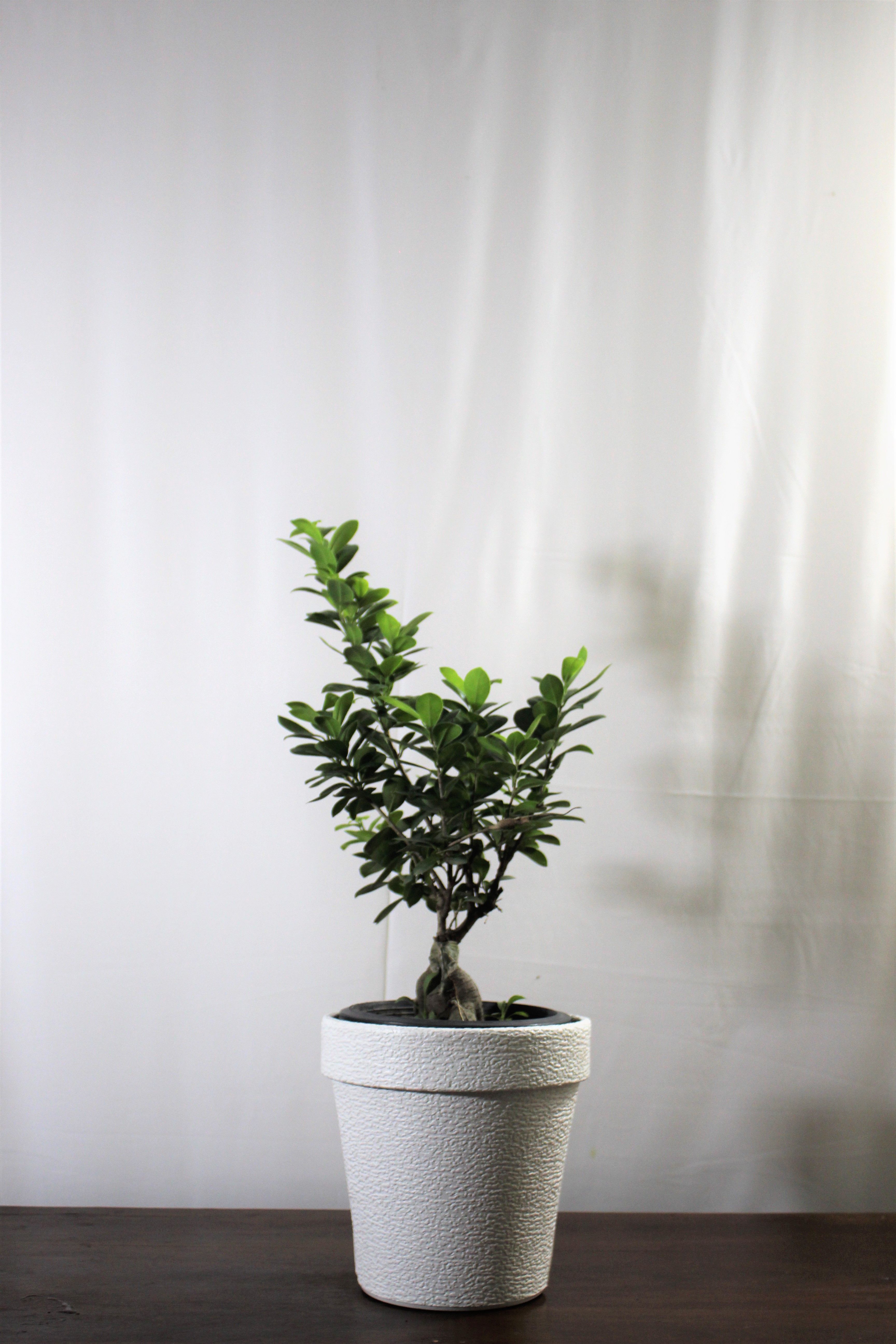
Dwarf Bonsai
Scientific Name:
Ficus retusa and Ficus microcarpa
If you are looking for an entry into the ancient Japanese art of Bonsai, a great place to start is with a Ginseng Ficus. It looks terrific and requires minimal care when compared to other bonsai, which can be quite difficult to maintain.Original price is Rs 5000 but at our new year sale you are getting it at Rs 4500. Comes in Basic Black Pot of Size 10 inches Pictures are for reference original product may vary a little in size
Planter Color: None
Rs 4500
Stock Available
The Ficus is part of the Moraceae or Mulberry family and it grows throughout the tropical regions of the world. The ginseng ficus particularly is native to Southeast Asia. It is an interesting-looking plant for a bonsai, with narrow elevated roots that swell into a potbelly trunk and narrows at the branches before spreading out to the crown.
Bonsai artists especially focus on the raised roots of these funky little plants to create a certain aesthetic. In their natural habitat, these aerial roots are grown with ease in high humidity environments. At home, you need to recreate these humidity levels which often means an artificial enclosure. The effect is achieved by roots growing vertically downward from branches until they reach the soil, where they develop into thick strong trunks. This can achieve the desired pillar style or the root-over-rock bonsai style called deshojo.
The most significant rule to remember is that, in the end, it is an art form and, like all art, there are no rules. If you can keep your bonsai alive you have created a masterpiece. Know that the sap from this plant is toxic to humans and touching the plant can cause skin irritation and allergic reactions, so you should wash your hands after touching it


 Home
Home Leafy
Leafy Succulents
Succulents Rare
Rare